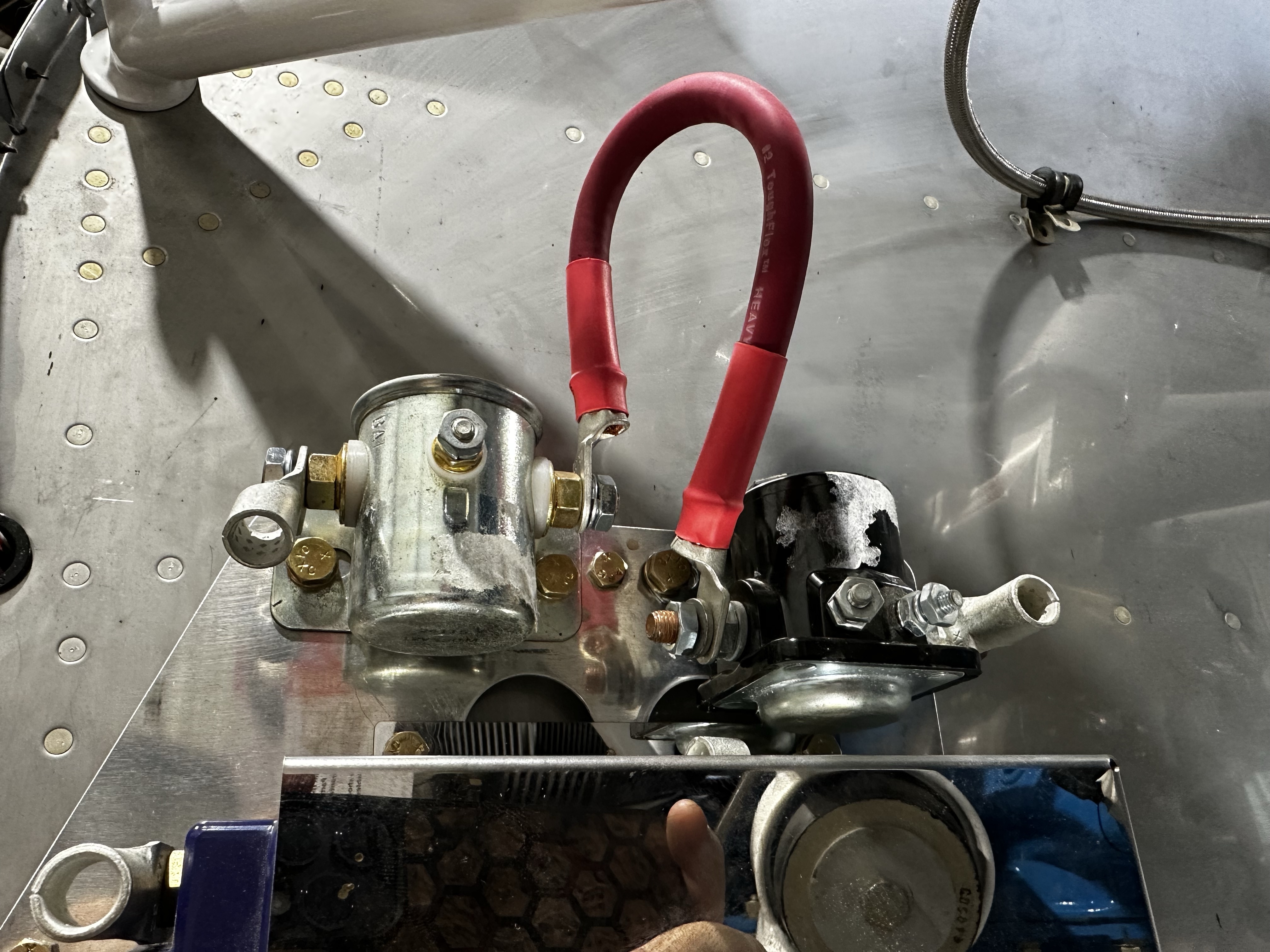OK, so first order of business this evening was to get the roughed-out mount drilled to the firewall. The challenge here was figuring out some way to hold the plate in place while drilling the first hole. I didn’t even need it to be held tightly – I figured if I could just make a starting dimple in the plate at about the right location, I could then finish the hole off the airplane and use that first hole as a reference.
Eventually I ended up using one of the most important tools in anyone’s toolbox – that’s right, duct tape. The lower right corner of the mount plate rests on the rudder anchor block, so the tape really only has to keep the mount from rotating counterclockwise around that reference point. Two strips do the job just fine:

The rest of the holes were pretty easy; in all cases I initially drilled #30 to match the existing hole size in the firewall, then I went back and enlarged each hole to #12 for an AN3 bolt.
Next up was adding the mount points for the contactors. The basic idea is to mount these as high as possible, which will then enable the battery box to also be mounted as high as possible, and in turn ensure plenty of clearance between the box and the nearby lower engine mount tube.
I did end up doing some ad-hoc replanning here, though. My initial plan was to add a second .063” sheet here, which would give me enough thickness to insert flush 1/4” screws from the back of the mount; these would be then secured with jam nuts and lock washers, creating the same sort of “fake studs” I used for the avionics stuff on the baggage bulkhead.
I’ve never really liked that idea, though, and as I looked at everything I decided that things could be really simplified here if I just didn’t insist on having the mount actually sit flush on the firewall. If I could add some standoffs and space it off by 1/4” or so, then I could just use regular old nutplates and bolts to attach the contactors. So I decided to go that route, and instead of riveting a doubler here and doing some annoying countersinking, I just had to lay out four nutplates to match the mount holes.
The final product is seen below. Note that there’s a bolt hole here for securing the plate to the firewall, flanked by the pairs of mount holes for the master (left) and started (right) contactors.

Next up is finalizing the battery box location and getting those holes drilled. Which has me thinking now – originally I was going to rivet the box to the mount, but now that the mount will be spaced off the firewall, I can go with bolts and nutplates there as well. That should simplify battery installation and removal – I was figuring on that requiring loosening the bolts for the mount plate itself, allowing the box to tilt and clear the firewall flange, but this way it’ll only require loosening the box bolts, which should be a little less unwieldy.
Anyway, hopefully tomorrow I can get that fit-up done, and then I’ll set about strategically removing significant material from this plate to lighten things up.













